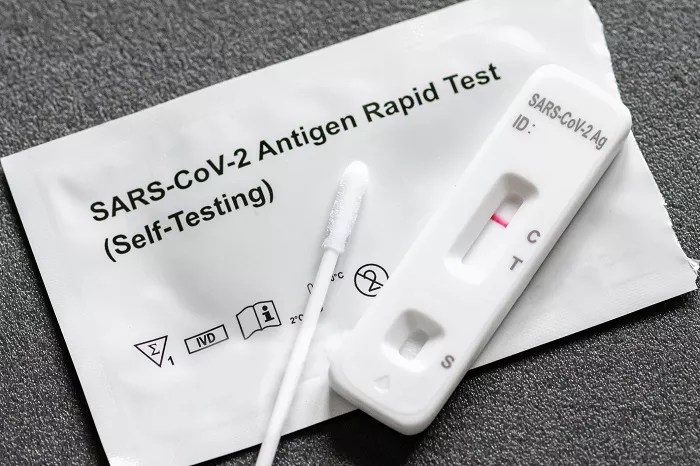A C-section, also known as a cesarean section, is a surgical procedure used to deliver a baby through incisions made in the mother’s abdomen and uterus. Although this procedure is generally safe and widely performed, it does carry some risks, one of which is the potential opening of the incision site after surgery. The consequences of an open C-section incision can be serious, potentially leading to complications for the mother, and even posing life-threatening risks if not addressed promptly. In this article, we will explore what happens if a C-section incision opens, how to recognize the signs of this complication, and what steps can be taken to prevent or treat it.
Understanding the C-Section Incision
Before diving into what can happen if a C-section incision opens, it’s important to first understand the nature of the incision itself. The C-section incision is typically made in one of two places on the abdomen: a horizontal incision across the lower abdomen (also known as a bikini cut) or, in some cases, a vertical incision running from the navel down to the pubic area. The incision is made through multiple layers of tissue, including the skin, subcutaneous fat, abdominal muscles, and the uterine wall.
After the baby is delivered, the incision is carefully stitched or stapled closed. This process is essential for proper healing. However, due to various factors such as infection, excessive physical strain, or improper aftercare, the incision site may open, which can cause significant complications.
Causes of a C-Section Incision Opening
There are several factors that may contribute to a C-section incision opening. The most common causes include:
Infection: One of the most serious risks associated with any surgical procedure, including a C-section, is infection. Bacteria can enter the incision site if proper hygiene and care are not maintained during the healing process. If the infection becomes severe, it can cause the incision to break open.
Excessive Physical Activity: After a C-section, the body needs time to heal, and this includes avoiding physical activities that could strain the incision site. Lifting heavy objects, excessive movement, or performing activities that involve abdominal pressure can stress the healing tissue, potentially causing the incision to reopen.
Improper Wound Care: If the incision is not cared for properly, it can lead to complications. For instance, failing to keep the area clean and dry or not following your healthcare provider’s advice on dressing changes can increase the risk of the incision opening.
Delayed Healing: Sometimes, the healing process itself can be hindered due to underlying conditions such as diabetes, obesity, or poor circulation. These factors can slow down the healing of the incision, increasing the risk of the incision site reopening.
Premature Activity or Strain: Some women may return to physical activity or resume their daily routine too quickly, which can place unnecessary stress on the abdominal wall, resulting in the incision opening.
Coughing or Vomiting: A forceful cough or vomiting can put significant pressure on the incision site, especially in the first few weeks following the C-section. This pressure can potentially cause the incision to separate.
What Happens When a C-Section Incision Opens?
If a C-section incision opens, the consequences can range from mild discomfort to serious medical emergencies. Understanding what happens can help individuals recognize the signs early and seek the necessary medical attention. Here are the potential effects of an open C-section incision:
1. Pain and Discomfort
The first and most immediate consequence of an open incision is pain. This can be a sharp or throbbing pain around the incision site. The pain may be more intense when moving, coughing, or sneezing, as these actions can exert pressure on the area.
2. Increased Risk of Infection
An open incision is highly susceptible to infection. Bacteria from the surrounding environment or from the body itself can enter the exposed tissue, leading to a local infection at the incision site. Symptoms of infection include redness, swelling, warmth, discharge of pus, or a foul odor. In severe cases, the infection can spread to the surrounding tissue and even enter the bloodstream, leading to sepsis, which is a life-threatening condition.
3. Delayed Healing and Scarring
If the incision opens, the body’s ability to heal the wound properly is compromised. The open wound can lead to delayed healing, which increases the risk of permanent scarring. Additionally, improper healing can lead to complications such as wound dehiscence, which is when the wound opens up again after initially closing.
4. Blood Loss
An open incision may also result in increased blood loss. The incision site may begin to bleed, and if not managed promptly, this can lead to excessive blood loss, which is dangerous for the mother. The amount of blood loss will vary depending on how large the opening is, but any significant bleeding after a C-section should be addressed immediately.
5. Tissue Damage
When an incision reopens, the tissue surrounding the incision may also become damaged. This can increase the complexity of the healing process and may require additional surgeries to repair the tissue. In some cases, the underlying organs, including the uterus, may be exposed, which can lead to further complications.
6. Emotional and Psychological Impact
Having a C-section incision reopen can also have a significant emotional and psychological impact on the mother. The stress of dealing with complications, potential hospital readmission, and the fear of long-term health consequences can take a toll on a new mother’s mental health.
Signs That a C-Section Incision May Be Opening
If you suspect that your C-section incision is opening, it’s important to be able to recognize the signs early. Some of the most common indicators that the incision may be opening include:
Visible Gaps in the Skin: If the edges of the incision appear to be separating, or if you notice any visible gaps, it may indicate that the incision is reopening.
Excessive Pain: If you experience significant pain around the incision site, especially if the pain worsens when moving or engaging in physical activity, this could be a sign that the incision is opening.
Increased Discharge: If there is an unusual or excessive amount of discharge coming from the incision site, especially if it is yellow or green and has a foul smell, this could indicate an infection or the wound is opening.
Bleeding: Any significant bleeding from the incision site is a cause for concern. While minor bleeding may occur as the wound heals, a large amount of bleeding or fresh blood should be addressed by a medical professional immediately.
Redness and Swelling: Redness and swelling around the incision site that worsen over time may suggest that the wound is not healing properly or is opening. The skin may also feel warm to the touch.
How to Prevent a C-Section Incision from Opening
Preventing a C-section incision from opening is crucial for the recovery process. Here are some steps that can help minimize the risk:
Follow Postoperative Care Instructions: After a C-section, your healthcare provider will give you specific instructions on how to care for your incision. This includes keeping the area clean and dry, changing dressings regularly, and avoiding unnecessary physical strain.
Avoid Heavy Lifting: It’s important to avoid lifting heavy objects, especially in the first few weeks after surgery. Lifting can put stress on the incision site and increase the risk of the wound opening.
Rest and Recovery: Giving your body enough time to heal is essential. Avoid strenuous activities and give yourself ample time to rest and recover before resuming normal physical activity.
Wear Comfortable Clothing: Tight clothing can rub against the incision site and irritate the healing tissue. Choose loose, comfortable clothing that won’t put pressure on the area.
Stay Hydrated and Nourished: Proper nutrition and hydration are essential for wound healing. Ensure that you’re eating a balanced diet rich in vitamins and minerals to promote tissue repair.
Monitor for Infection: Be vigilant in checking your incision site for signs of infection. If you notice any of the symptoms mentioned earlier, seek medical attention immediately.
Treatment for an Open C-Section Incision
If your C-section incision does open, it’s crucial to seek medical attention as soon as possible. Treatment options will depend on the severity of the situation. In mild cases, the incision may be cleaned and restitched. In more severe cases, you may need additional surgery to repair the tissue and address any underlying complications such as infection or bleeding.
Your healthcare provider will also assess the wound for infection and prescribe antibiotics if necessary. Pain management will also be provided to ensure your comfort during the recovery process.
Conclusion
A C-section incision that opens can lead to serious complications, including infection, delayed healing, and tissue damage. Recognizing the signs of an open incision early and seeking prompt medical attention is critical for preventing further complications. By following proper aftercare instructions, avoiding excessive physical activity, and maintaining good hygiene, you can minimize the risk of your C-section incision opening. If you do experience any signs of a wound opening, contact your healthcare provider immediately for proper evaluation and treatment. Remember, your health and recovery are paramount, and timely intervention can help ensure a smooth healing process.
Related Topics































